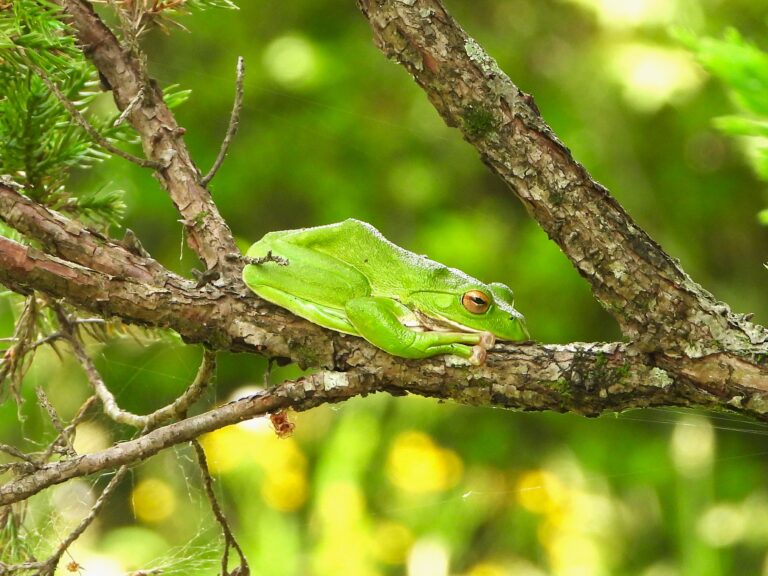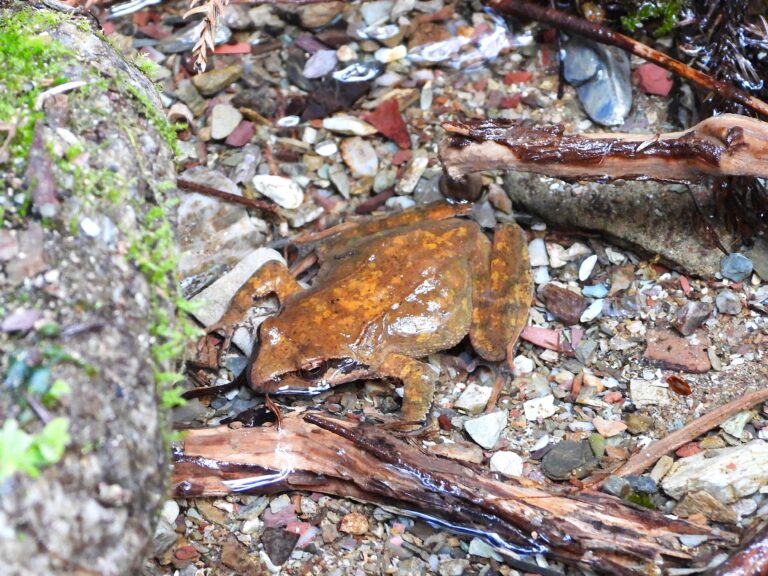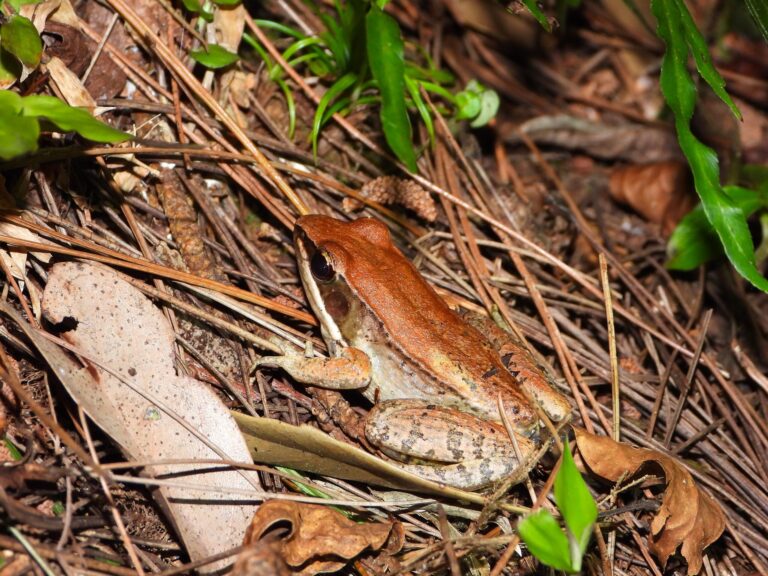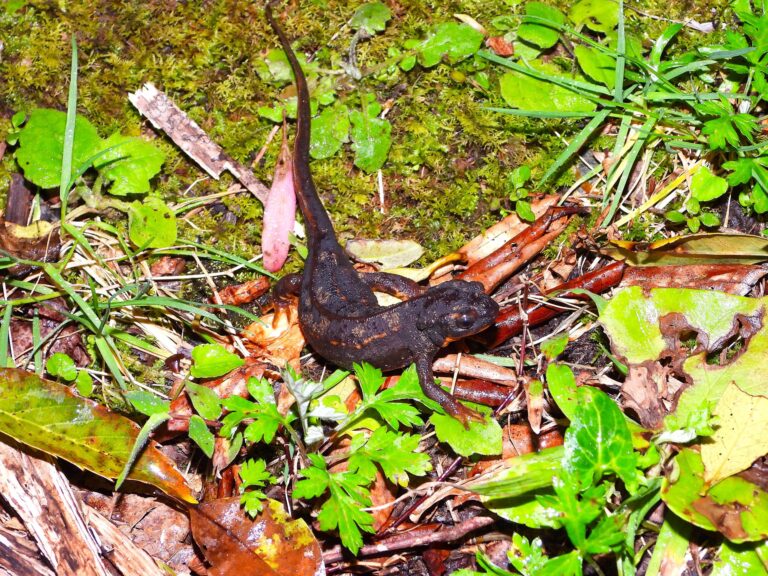Greater Tip-nosed Frog (Odorrana supranarina) – Wildlife of Japan
Introduction
The Greater Tip-nosed Frog (Odorrana supranarina) is a large amphibian found only on Japan’s Yaeyama Islands, particularly Ishigaki and Iriomote in Okinawa Prefecture.
It belongs to the stream-dwelling genus Odorrana, whose members have long legs and pointed snouts that help them move through fast-flowing water.
Because of its size, the name supranarina means “beyond the tip-nosed frog.”
Appearance
This species ranks among the largest frogs in Japan.
Males grow to 59–77 mm, while females reach 82–103 mm in snout–vent length.
Its brown to greenish-brown back feels smooth, and its toes have broad webbing for swimming.
The pointed snout and visible eardrum make it easy to recognize, and its strong hind legs allow powerful jumps.
Habitat & Distribution
The Greater Tip-nosed Frog lives only on Ishigaki and Iriomote Islands.
It prefers evergreen forests near clean mountain streams and shaded waterfalls.
Because it needs undisturbed freshwater, its presence signals a healthy forest ecosystem.
Therefore, any decline in local water quality directly threatens its survival.
Where to See in Japan
Travelers can find this frog along mountain streams on Ishigaki or Iriomote.
After rainfall or on humid nights, individuals often appear on rocks near the water.
When observing, avoid touching or shining bright lights directly at them.
Instead, use soft red light and keep to stable paths to protect the streamside environment.
Behavior
This frog stays close to water and moves mainly at night.
It often rests on streamside rocks and leaps away when startled.
During the breeding season, males give short, low calls that echo softly through the forest.
Diet
Researchers have not yet published detailed studies on its diet.
However, similar Odorrana species feed on insects and other small invertebrates found around streams, so this frog likely eats the same kind of prey.
Reproduction
Breeding takes place from October to March.
Females lay eggs in calm pools or slow-moving sections of streams, attaching them to submerged rocks or leaves.
The tadpoles then grow in the same clear, shaded water until metamorphosis.
Conservation
The IUCN Red List classifies this species as Endangered (EN).
Habitat loss from development, pollution, and deforestation remains the biggest threat.
Because it lives only on two islands, extreme weather and invasive species can also cause serious damage.
Protecting forest streams and maintaining clean water are therefore essential for its conservation.
Author’s Impression
When I first saw this frog in the Yaeyama forests, I was struck by its size and strength compared with the smaller Yaeyama Tip-nosed Frog (Odorrana utsunomiyaorum).
The difference is clear once you see both: the Greater Tip-nosed Frog has a broad head, thick limbs, and a heavier build, while the smaller species looks slender and delicate.
If you spot a big, muscular frog beside a mountain stream, it’s almost certainly O. supranarina.







